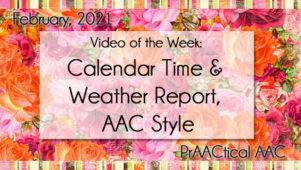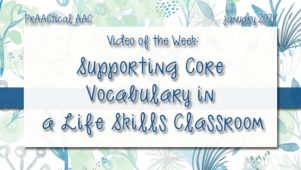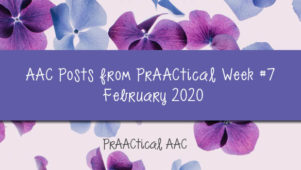How We Do It: Co-Teaching with PODD by Dana Brown and Sara Olsen
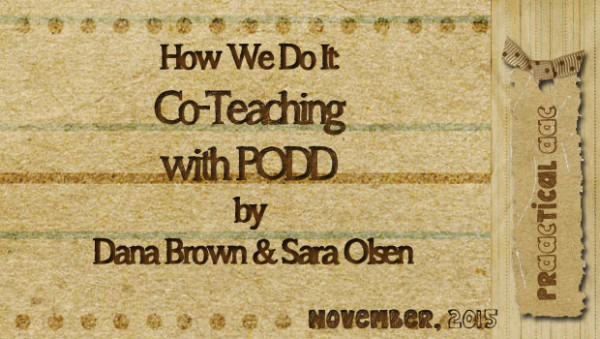
When SLPs and teachers work together for the benefit of students with little or no functional speech, the results can be magical. Today, we travel to Wisconsin to visit with SLP Dana Brown and 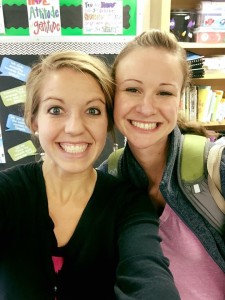 Special Educator Sara Olsen who work together at the elementary school level. In this post, Dana and Sara tell us about their experiences using PODD in a classroom of students with intellectual disability. You can learn more about their work on YouTube (Watch Your Language) where they post Word of the Week videos and snippets of AAC use in different clasroom activities. Regular readers know that we’ve posted a few articles and videos on PODD.
Special Educator Sara Olsen who work together at the elementary school level. In this post, Dana and Sara tell us about their experiences using PODD in a classroom of students with intellectual disability. You can learn more about their work on YouTube (Watch Your Language) where they post Word of the Week videos and snippets of AAC use in different clasroom activities. Regular readers know that we’ve posted a few articles and videos on PODD.
:::::::::::::::::::::::::::::::::::::::::
We write as a team of special educators, a Speech Language Pathologist (SLP) and an Intellectual Disabilities teacher, and one thing that we’ve learned working closely together is that AAC is difficult and ongoing. In this post, we are excited to share with you a little bit about our journey to AAC implementation and how it was NOT always an easy journey. We love having the opportunity to reflect on our own instruction, collaborate with others, find ways to tweak instructional techniques to make them work for our students at our school, and share what works well for us, so that maybe it can have a positive impact on your therapy and instruction as well. We’re part of an amazing special education team that helps support students with intellectual disabilities, learning disabilities, autism, and speech and language impairments.
Twelve of our students are nonverbal, and many of our other students have significantly delayed receptive and expressive language skills, which means that implementing AAC never ends. We have spent the past few years trying to make teaching language more meaningful, and PODD books have made a positive impact on our lives. We have over 20 of them being used within our school. Click here for more information about PODD.
Although we have always understood the importance of communication, academics, and collaboration, it took us a lot of trial-and-error to figure out how to target those skills autonomously. Before we revamped our instruction, and before PODD books, we were not working closely enough as a team. The SLP was pulling our nonverbal students with Autism and Down Syndrome individually to her room to target language and vocabulary skills, and the special education teacher was responsible for addressing reading IEP goals and standards with a group of at least 5 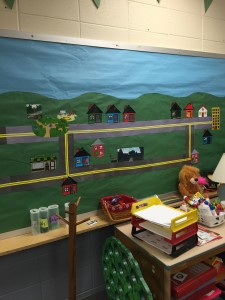 students with complex communication needs at a time. The SLP was frustrated and dreaded planning therapy activities because it was difficult to find ways to encourage the carryover of skills to other settings, and there was less time for her to observe the students in the special education setting. In addition to having difficulty with the generalization of skills to other settings, many of our students also have high sensory needs and unpredictable behaviors, making it difficult to work with them at specific scheduled times. And because we weren’t ever teaching together, our lessons were disconnected, and we didn’t have time to talk about students and goals; everything was separate. Our students also didn’t have enough opportunities to communicate. Some of our students had high tech devices, but everyone else mostly only had access to activity specific communication boards and devices, which were very limited in terms of vocabulary.
students with complex communication needs at a time. The SLP was frustrated and dreaded planning therapy activities because it was difficult to find ways to encourage the carryover of skills to other settings, and there was less time for her to observe the students in the special education setting. In addition to having difficulty with the generalization of skills to other settings, many of our students also have high sensory needs and unpredictable behaviors, making it difficult to work with them at specific scheduled times. And because we weren’t ever teaching together, our lessons were disconnected, and we didn’t have time to talk about students and goals; everything was separate. Our students also didn’t have enough opportunities to communicate. Some of our students had high tech devices, but everyone else mostly only had access to activity specific communication boards and devices, which were very limited in terms of vocabulary.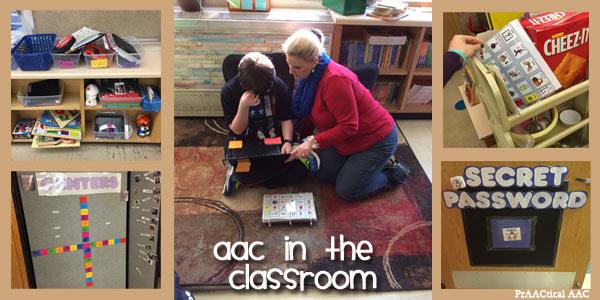
Last year, we decided that it was time for things to change. We started by scheduling our academic and Speech and Language IEP minutes together so that we were able to co-teach; this has been very successful. Throughout this process, we’ve found that as a SLP and special ed teacher, we have different perspectives on reading goals, and we’re able to work on reading and language together in a more fluid way. The next thing we did was implement PODD books to increase access to communication, and this was a huge undertaking. Like we previously said, we are using over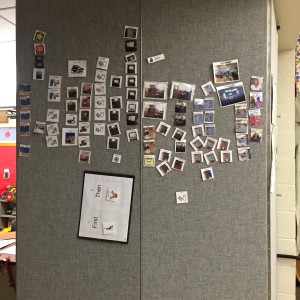 20 PODD books in our school, and making these books was not an easy task.
20 PODD books in our school, and making these books was not an easy task.
We also made it a point to train all of the aides, staff, and students in the school, as well as hold parent trainings, which was a time-consuming process. The progress we saw last year made it all worth it. While a lot of instruction revolved around us as staff modeling communication, we finally felt like all of our students had access to language, which was a huge relief. Suddenly we didn’t have to spend so much time making up different communication boards either.
A day in the life of one of our special education students consists of a variety activities, but the difference from previous years is that the student now has access to communication with a variety of communication partners during all of these activities. Students start their day out with breakfast, participate in calendar, math, reading, and center activities. Some of them may be pulled for physical and occupational therapies as well. They also attend specials with their classes, and spend time working within their regular education classrooms.
Our school environments have changed as we have switched to Personalized Learning, which makes it easier for our students (and all students) to work on their individualized goals in a least restrictive environment. Our students also have opportunities for sensory breaks throughout their days. Whether they are traveling between special education classrooms or walking with a paraprofessional throughout the school, the PODD is always within reach!
Now it’s a new year, and we’re trying to decide where to go next. Great things have been happening in our school, but we’re constantly reflecting on how to provide more opportunities for communication. There are many days when we feel frustrated, because it is difficult to make sure that students always have their ¨voice¨ with them. It’s also challenging to continually model language ALL DAY LONG, especially when the number of students with complex communication needs outnumber the adults. One thing that has helped is  that instead of always looking at AAC implementation as a whole, we’ve been setting goals to increase communication during specific classes or times of the day. For example, as a special ed teacher, one of my goals is to increase communication during snack and lunch time, and this has really helped me focus and not become too overwhelmed. Last year, the team focused on using AAC during centers activities (e.g., bubbles, books, arts and crafts, blocks) to target making requests and comments and language expansion. We recommend that once you have your PODDs or other AAC tools, you should create goals with your team members.
that instead of always looking at AAC implementation as a whole, we’ve been setting goals to increase communication during specific classes or times of the day. For example, as a special ed teacher, one of my goals is to increase communication during snack and lunch time, and this has really helped me focus and not become too overwhelmed. Last year, the team focused on using AAC during centers activities (e.g., bubbles, books, arts and crafts, blocks) to target making requests and comments and language expansion. We recommend that once you have your PODDs or other AAC tools, you should create goals with your team members.
Work together so that when one of you becomes frustrated, and you WILL become frustrated, you are able to talk about it with your team and find the inspiration to keep on trucking.
::::::::::::::::::::::::::::::::::::::::::::::::::::::::::::::::::::::::::
You can reach these wonderful young professionals on Instagram (Dana: watch_your_language), by email (Dana: dbrown@janesville.k12.wi.us; Sara: solsen@janesville.k12.wi.us)., or through their YouTube Channel
Filed under: PrAACtical Thinking
Tagged With: classroom, collaboration, Dana Brown, PODD, PODD book, Sara Olsen, schools
This post was written by Carole Zangari

